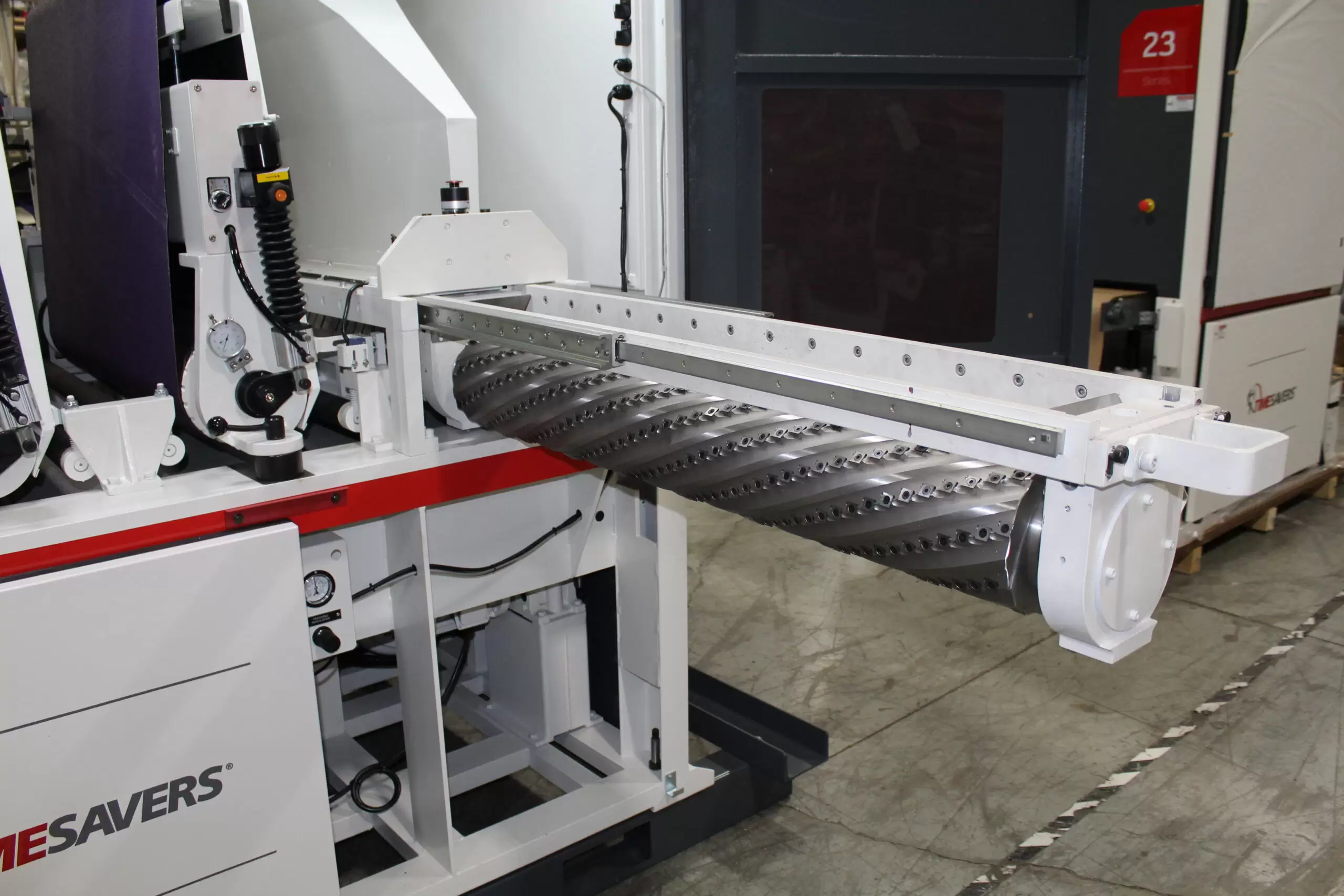How to Sand Veneer and Lacquer

Table of Contents
- Lacquer vs. Veneer — What’s the Difference?
- Can You Sand Veneer?
- How to Sand Veneer
- Can You Sand Lacquer?
- How to Sand Lacquer
- Shop Timesavers for Lacquer and Veneer Wood Sanding Equipment
When you want to enhance a wood project’s appearance and longevity — like tables, countertops, shelving and ornamental pieces — your best option is to use either veneer or lacquer. Veneer and lacquer each give wood a smooth, professional look while coating it with an additional layer of protection against cosmetic wear. Because these materials are thin and must adhere to various wood types and textures, your project requires some preparation work before applying your preferred topper. One of the most critical steps in this process is sanding.
Sanding your wood before applying veneer or lacquer ensures an even application without splintering pieces or excessive holes that may interfere with the finished product’s look or feel. You can sand wood with sandpaper or sanding equipment, but you must find a balance between over-sanding and under-sanding for optimal results. With the right tools and techniques, sanding your wood before the application can be simple and quick.
At Timesavers, we know the value of your time and craftsmanship. That’s why we offer a range of woodworking sanders with the top materials and designs in the industry, so you can boost your shop’s productivity and feel confident in the final results. All of our machines meet and exceed production requirements, with available representatives ready to answer any questions and provide more insight into your woodworking project.
Read on to learn how to sand veneer and lacquer and how Timesavers can help transform your next project.
Lacquer vs. Veneer — What’s the Difference?
Veneer is a type of thin, delicate wood applied to the outside of thicker wooden pieces. It’s often decorative in nature but also protects internal construction from minor scuffs and scratches while adding more structural stability. Paired with endless design options, these features make it a common choice for furniture pieces and cabinetry.
Lacquer is not a type of wood but a liquid coating that dries quickly when applied to wooden pieces. It creates a hard, durable layer that seals the wood underneath from wear and tear. Lacquer is available in several types and applications, like matte finishes and convenient spray-on coatings, as well as the traditional paint-on method.
If you’re working with a piece of pre-crafted wood, the easiest way to distinguish between a veneer layer and solid wood with a lacquer coating is to check for wood grain consistency, especially around the edges. Lamination lines, opposing wood grain patterns and visible bonds or edging likely indicate a veneer topper. If your piece is solid wood, you’ll know it’s got a lacquer coating — rather than a layer of polyurethane — if it rubs off when you apply acetone.
Can You Sand Veneer?
As you might expect, veneered pieces are very delicate and require careful sanding to avoid irreversible damage. If you sand veneer too much, you may render it unusable. Before you begin sanding, you should carefully inspect the veneer for damage — like air bubbles, lifted corners or peeling — and make repairs as possible. While hand sanding may work for thin pieces and small applications, you should not attempt to sand a large surface area by hand. Industrial sanders are better for handling large-scale veneered pieces, including most furniture.
How to Sand Veneer
Practice patience when hand sanding small veneered pieces. For most veneer types, we recommend starting with nothing coarser than a 100-grit and slowly working your way up to a 220-grit or finer, depending on the piece and desired outcome. All increases and changes should be gradual.
If you’re using an industrial sander, you have your choice between multiple belt sanders, moulding sanders or rotary brush machines. The experts at Timesavers recommend a segmented polisher, like our 23 Series polisher, for best results on veneered surfaces. The 2300 Series polisher utilizes an electronic segmented polishing pattern that perfectly forms to the wood’s surface, ensuring an even sand that doesn’t go too far. It’s ideal for small and mid-size cabinetry, furniture and millwork plants.

The 23 Series polisher is fully customizable, and you can outfit it with a range of heads to meet your exact needs, including a:
- Drum head
- Combination head
- Dual-action head
- Cross-belt head
- Chevron head.

When sanding veneer, be careful not to sand across the grains and stop if you see yellow at any point — this is a good indicator that you’ve sanded too far. Never use water when working with veneer, as it could cause bubbling or poor adhesion for any final coatings.
Can You Sand Lacquer?
Though less delicate than veneer wood, lacquered coatings can be a challenge to sand if you don’t have the right tools because of the thick layer it creates. It may take more time than sanding veneer since you must wait until each layer of lacquer dries completely before you can begin sanding it. Like veneered wood, you can hand sand lacquer or use an industrial wood sander, depending on the size of the piece and how much sanding your project requires.
How to Sand Lacquer
If you’re hand sanding lacquer, start by wetting the surface lightly and using 320- to 400-grit sandpaper to smooth the surface until you see your desired sheen and finish. For mid-size and larger applications or shops, an industrial sander — like a segmented polisher, rotary brush, wide belt sander or moulding sander — is a better fit than paper. Some projects may require sanding multiple times between applying layers of new lacquer, especially if refinishing a piece. Allow the project time to harden and dry completely when finished.
If you sand lacquer frequently in your woodworking shop, we recommend investing in a compact, versatile machine that meets several of your sanding needs at once. Our 23 Series rotary brush is a condensed, operator-friendly sanding solution that utilizes eight unique, abrasive brushes to give wood pieces an even, smooth finish. It also works on veneered wood, making it a must-have powerhouse around the shop.
Always wear necessary protective equipment when you’re sanding wood, especially when working with lacquer. Inhaling too much lacquer and dust may cause serious short-term and long-term health ramifications.
Shop Timesavers for Lacquer and Veneer Wood Sanding Equipment
Woodworkers across the nation rely on Timesavers for equipment and industry expertise to complete small- and large-scale projects, including veneered and lacquered wood pieces. Shop our inventory of industrial sanding machines and make an investment that will help your shop be more productive than ever.
Interested in learning more about sanding veneer and lacquer or have a specific question about a challenging project? The team at Timesavers is available with helpful insight and equipment support for all of our top-quality industrial sanding machines. Give us a call at 1-800-537-3611 or contact us online to learn more or find a distributor near you to get started. If you’re ready to vastly boost your line’s productivity, request your custom quote today!

